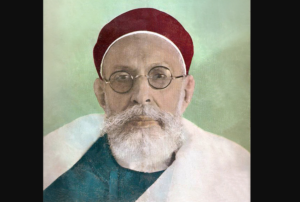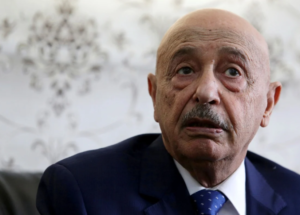Since its independence, Libya has experienced significant political changes and leadership transitions. Below is a detailed list of the presidents of Libya, arranged in chronological order, highlighting their years of tenure.
[table “30” not found /]READ ALSO: Presidents That Have Ruled Tunisia
First President of Libya:

Tenure: 1951 – 1969
Idris I, also known as King Idris, was the first and only monarch of Libya. He ruled as King from 1951 until he was overthrown in 1969.
Notable Achievements:
- Independence: Idris led Libya to independence from Italy on December 24, 1951, becoming the first King of the United Kingdom of Libya.
- Formation of the Nation: He played a crucial role in uniting the three regions of Libya – Cyrenaica, Tripolitania, and Fezzan – into one nation.
- Oil Discovery: During his reign, Libya discovered significant oil reserves, which transformed the country’s economy and increased its global importance.
Downsides:
- Autocratic Rule: His rule was often criticized for being autocratic and heavily reliant on tribal alliances.
- Economic Disparities: Despite the oil wealth, economic disparities persisted, and many Libyans felt marginalized and excluded from the economic benefits.
Idris I was overthrown in a coup led by Muammar Gaddafi in 1969, marking the end of the monarchy in Libya.
READ ALSO: Presidents That Have Ruled Ivory Coast Till Date
Current President of Libya:

Tenure: 2014 – Present (Interim)
Aguila Saleh Issa is currently the President of the House of Representatives in Libya. His role has been largely defined by the ongoing conflict and political instability in the country.
Notable Achievements:
- Political Leadership: Saleh has been a key figure in Libya’s political landscape, attempting to navigate the country through a turbulent period of division and conflict.
- Efforts at Reconciliation: He has been involved in various international efforts aimed at reconciling the different factions within Libya.
Downsides:
- Political Instability: His tenure has been marked by significant political instability, with ongoing conflicts between rival factions.
- Limited Authority: Due to the fragmented nature of Libyan politics, his authority is limited, and many regions do not recognize his leadership.
READ ALSO: Presidents That Have Ruled Paraguay Till Date
Current Vice President of Libya
Libya does not have a designated position of Vice President in its governmental structure. The political system has been characterized by a fragmented and transitional nature, especially following the 2011 civil war.
The governance structure primarily includes the President of the House of Representatives, the Prime Minister, and other key ministerial roles.
Highlights of Notable Presidents
Muammar Gaddafi (1969 – 2011):
- Revolutionary Leadership: Gaddafi came to power through a coup in 1969, overthrowing King Idris I. He established the Libyan Arab Republic and later the Great Socialist People’s Libyan Arab Jamahiriya.
- Economic Policies: Gaddafi used Libya’s oil wealth to implement extensive social and economic reforms, including free healthcare and education, and significant infrastructure projects.
- Downside: His rule was marked by human rights abuses, suppression of political dissent, and a dictatorial style of governance. Gaddafi’s tenure ended violently during the Libyan Civil War in 2011, resulting in his death.
Mustafa Abdul Jalil (2011 – 2012, Interim):
- Transitional Leadership: As the head of the National Transitional Council, Abdul Jalil played a crucial role in the immediate aftermath of Gaddafi’s overthrow.
- Efforts to Stabilize: He attempted to stabilize the country and set the foundation for democratic governance.
- Downside: His tenure was short and faced challenges from various militias and factions vying for power in the post-Gaddafi period.
Mohammed Magariaf (2012 – 2013, Interim):
- Democratic Transition: Magariaf served as President of the General National Congress, working towards establishing a new political order.
- Constitutional Efforts: He focused on drafting a new constitution and preparing for parliamentary elections.
- Downside: His time in office was marked by continued instability and violence, reflecting the difficulties of transitioning to democracy.
READ ALSO: Presidents That Have Ruled Nigeria Till Date
Conclusion
Libya’s presidential history reflects its complex journey from a monarchy to a republic and through numerous transitional phases. From Idris I’s role in securing independence to Muammar Gaddafi’s long and controversial rule, and the ongoing efforts of Aguila Saleh Issa to navigate a divided nation, each leader has left a distinct mark on Libya’s political landscape. The absence of a Vice President role highlights the unique and often tumultuous nature of Libyan governance.
References
For more detailed information, the following sources were consulted:
- BBC News – Overview of Libya’s political history and leaders.
- Al Jazeera – In-depth articles on Libyan politics and leaders.
- Encyclopaedia Britannica – Historical context and profiles of Libyan leaders.
- The Guardian – Current updates and news on Libya’s political situation.
